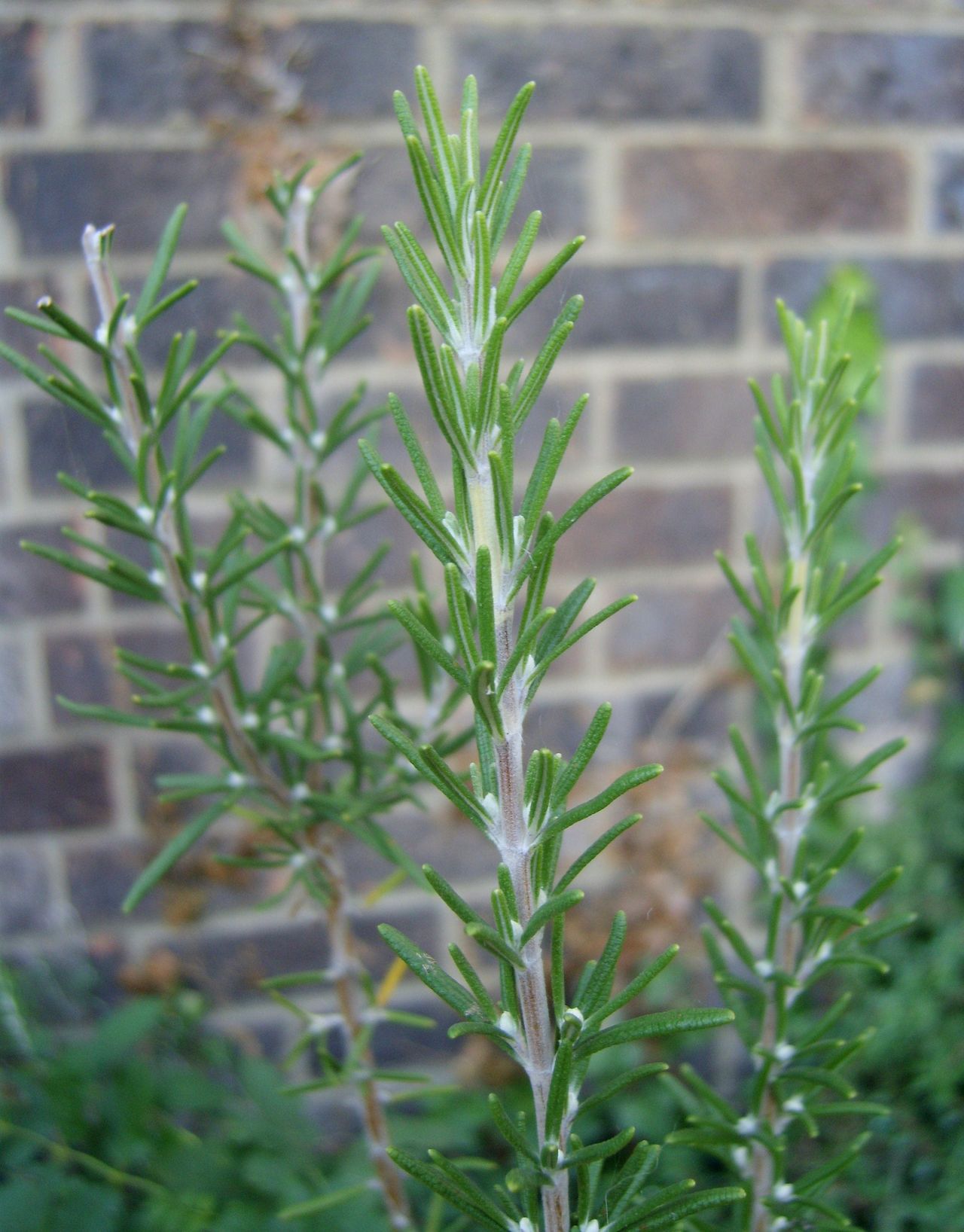Rosemary, A Complete Plant Care And Growing Guide
The deliciously aromatic rosemary plant is a staple in some homes. Learn how to grow rosemary for a fresh accent in your favorite dish.

How To Grow And Care For Rosemary Plants
Quick Facts:
Botanical name: Salvia rosmarinus
Height: 2-6 feet (0.5-2 m)
Spread: 2-4 feet (0.5-2 m)
Sun exposure: Full sun
Soil requirements: Slightly acidic, well-draining
Hardiness zones: USDA 7-10, occasionally 6
Gardening tips, videos, info and more delivered right to your inbox!
Sign up for the Gardening Know How newsletter today and receive a free copy of our e-book "How to Grow Delicious Tomatoes".
When to plant: Spring
Rosemary Care
Rosemary has been used medicinally at least from the time of the ancient Greeks and Romans around 500 B.C. Native to the warm Mediterranean region, rosemary is hardy in USDA zones 7-10, occasionally even into zone 6. With the proper light, water, temperature, soil, and fertilizer, rosemary has been known to live as long as 30 years.
Light
Rosemary should be grown in full sun; at least 6 hours of direct sun. If growing it indoors, rosemary needs a south-facing window and often supplemental grow lights.
Water
Rosemary prefers its soil on the dry side. It should be watered every week and a half to two weeks in the ground and once a week if it is container-grown. Before watering, check the top inch (2.5 cm) of soil with your finger. If it is dry to the touch, water the herb.
Temperature & Humidity
Rosemary likes warm temperatures with moderate humidity. While most varieties tolerate high temperatures, they prefer a range of 55-80 F (13-27 C). Most varieties will die at temperatures below freezing.
Soil
Most cultivars of rosemary thrive in well-draining, slightly acidic, loamy soil with a pH of 6.0-7.0.
Fertilizer
Generally, rosemary grown in the ground will not need fertilizer however, even they will benefit from light fertilization. Feed them with a slow-release fertilizer for shrubs and trees or an organic fertilizer in the late winter or early spring. Sap-sucking pests are attracted to plants that have had too much nitrogen fertilizer applied.
Pests & Diseases
Rosemary is quite resistant to pests however, spider mites, mealy bugs or scales may attack the plant. A good spray of water or insecticidal soap can remove the majority of sap-sucking insects. Scales can easily be removed by pruning the tips of the plant where these sedentary pests are found.
Overwatering encourages root rots. The entire plant will become limp and its terminal shoots die off. Dig up the plant and prune out infected roots then dust with fungicide powder. If the root system is black and mushy, throw the plant away.
How to Plant Rosemary
Rosemary can be planted in the garden proper or grown as a container plant either indoors or outside. It can be grown in dry to medium soil that is well-draining, in full sun although it will tolerate light shade. Heavy clay soil should be avoided.
Growing Rosemary in Pots
Rosemary is often grown in containers, especially in areas where it's considered an annual. Containers should have adequate drainage holes.
The potted rosemary can be grown outside until temperatures begin to drop in the fall and then brought indoors and placed in a sunny southern window that provides at least 6 hours per day of full sun. Supplemental light may be needed in the form of grow lights.
Plants in pots generally need more frequent irrigation than those grown in the ground and this is true of rosemary when it is outside. However, avoid overwatering which can foster fungal diseases. Only water when the top inch (2.5 cm) of soil feels dry to the touch.
Take overwintered rosemary outside again in the mid-spring when temps have warmed and all danger of frost has passed.
Repotting
Rosemary should be repotted each year in the spring. Remove the plant from its container, loosen the roots gently, and place it at the same depth in a new pot that is one size up from the last, then fill in around the plant with fresh potting medium.
Overwintering
Rosemary should be moved if it is in an area that gets freezing temperatures. If it is container grown, the plant can be moved inside and cared for much as a houseplant or, it can go in a protected garage or shed and be allowed to go dormant until spring.
Plants that remain in the ground can be covered with burlap bags or chicken wire enclosures filled with dry leaves to protect them from the cold. It is also best to situate plants on the south or west side of the house so they can benefit from the protection of the foundation.
Also protect the roots of the plants by covering them with 5-6 inches (13-15 cm) of wood chips.
Pruning Rosemary
To get a bushier plant, prune rosemary after it blooms to encourage new growth. Since this is a woody herb, always use very sharp, sterile pruning shears to make your cuts.
Rosemary may be pruned at any time during the spring or summer; up until 4-6 weeks prior to the first frost for your area. Do not prune the plant after this point as pruning facilitates new growth which could then freeze and harm the plant.
Rosemary plants can be pruned into topiaries, but never remove more than 1/3rd of the foliage at any one time. Doing so can kill the plant.
Propagation
Rosemary can be grown from seed although germination rates are low and it takes some time (up to three years) for the herb to grow large enough to harvest from. Otherwise, propagation is more commonly done through cuttings.
Cuttings should be taken from mature plants. With a sharp, sterile knife or pruning shear, cut a 4-6 inch cutting in the late spring to early summer. Be sure your cutting is not blooming.
Remove the lower leaves from the cutting and place it immediately into a room temperature glass of water. In warmer temperatures, roots should grow within a few weeks; longer if it's colder.
When the roots are half an inch long, its time to transplant them into a well-draining, sandy soil medium and place them in a sunny area.
Rosemary Varieties
There are many varieties of rosemary, some upright and some prostrate in habit. Their blooms may be blue, pink or white, and some cultivars are more hardy than others.
Some of the more common cultivars include Albus, Arp, Collingwood Ingram, Creeping, Gorzia, Lockwood de Forest, Majorca Pink, Officinalis, Salem, Spice Island or Tuscan Blue.
Companion Plants for Rosemary
Rosemary is a good companion plant for most herbs such as basil, sage, thyme and oregano. It also makes a good companion plant for bloomers such as sunflowers, marigolds, and nasturtiums and settles in nicely with root veggies like carrots.
Rosemary Plant Uses & Benefits
In the garden, rosemary is suited for use in rock, winter, edible, cutting, pollinator, butterfly, childrens and other gardens. It does well in containers or as a border or low hedge as well as areas where it can trail.
Leaves can be used either fresh or dried in a variety of menus from steaks to stews to breads, herbal butters or vinegars. The flowers and leaves are used in sachets and potpourri and the oil is pressed for use in a variety of cosmetics and toiletries.
It has a long history of use medicinally. It is said to be antimicrobial, anti-inflammatory, and antioxidant. It is also purported to aid in alleviating pain, improving memory, promoting hair growth, and improving circulation.
Rosemary is also a good plant for areas with deer as they avoid the plant.
Frequently Asked Questions
Is Rosemary a Perennial?
Rosemary is a perennial in USDA zones 7-10 and occasionally zone 6. In other areas, it can be grown as an annual lasting only until the first winter freeze or can be moved indoors to overwinter.
Where Does Rosemary Grow Best?
Native to the Mediterranean, rosemary grows best in USDA zones 7-10. For further protection from cold, drying winds, plant rosemary along the south or west side of the home along the foundation of the house.

Nikki Tilley has been gardening for nearly three decades. The former Senior Editor and Archivist of Gardening Know How, Nikki has also authored six gardening books.
-
 The Dangers Of AI For Gardening – How To Know What’s Real When It Comes To Your Garden
The Dangers Of AI For Gardening – How To Know What’s Real When It Comes To Your GardenThings aren’t always what they seem when it comes to using AI for gardening. Be discerning when relying on AI for accuracy, and take the time to do research.
By Teo Spengler
-
 Best Determinate Tomatoes: Compact Varieties With Big Yields For Cooking & Canning
Best Determinate Tomatoes: Compact Varieties With Big Yields For Cooking & CanningDeterminate tomatoes are prized for their compact growth and bountiful harvests. Learn their characteristics and choose the best varieties for your garden.
By Bonnie L. Grant

